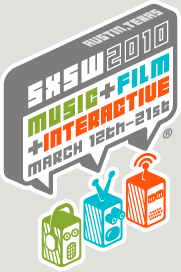For example, Takashi's 2005 project "The King Has...", a collaboration with Krister Olsson, invited people to text the artist(s) their most burdensome secrets; these secrets were then posted (anonymously) in a public place. Video below:
The King Has... from Takashi Kawashima on Vimeo.
Between November 2007 and March 2008, Takashi collaborated with Aaron Koblin on "Ten Thousand Cents," a "coordinated, crowdsourced [digital] art project" created by several thousand individuals using Amazon's Mechanical Turk service — a crowdsourcing marketplace, publicly launched in 2005, that enables computer programs to coordinate the use of human intelligence — and a customized Flash-based drawing software.
Koblin and Takashi divided a high-res scan of the $100 bill into 10,000 equal parts, each of which was delivered to a "turker" who was paid a penny to duplicate it using the drawing tool. Contributors (who hailed from 51 different countries) didn't have any idea of the whole picture. The project took 5 months to complete; the idea was to use 10,000 turkers, but some turkers participated more than once. The end result was a reproduction of a $100 bill that cost $100 to create. Video:
Ten Thousand Cents from Ten Thousand Cents on Vimeo.
There's a neat interface here that lets you watch any one of the 10,000 Flash paintings being created. "Ten Thousand Cents" was a finalist (Experimental category) for a SXSW Web Award in 2009.
More recently, Aaron Koblin and Daniel Massey collaborated on "Bicycle Built for Two Thousand" (great title), which used Amazon Mechanical Turk to record 2,088 sound clips. Turkers were sent a short-short sound clip — snipped from a mechanical-speech version of the 1892 song "Daisy Bell" — and asked to imitate what they heard, using a custom audio recording tool in a web browser. They were not given additional information. People from 71 countries participated; they were paid six cents apiece. Stitched back together, the clips sound like this:
Bicycle Built for Two Thousand from Aaron on Vimeo.
Why a mechanical-speech version of "Daisy Bell"? Because the song was used, in 1962, as the first example of musical speech synthesis. (That's also why HAL sings it, in 2001: A Space Odyssey.)





Besides Amazon's Mechanical Turk, what other popular crowdsourcing platforms and software are used (or usable) for collective art projects? Also -- is there a qualitative difference between crowdsourced art like the examples here, and open source art? After all, in the former, a single individual (or duo, in these cases) runs the show, whereas in open source every participant cooperates with full "agency," as they say.
ReplyDeleteThat's a bigger point, Josh, especially from the Bicycle Built for Two Thousand: the audience here clearly is following a set of guidelines without knowledge of the greater whole. Collectivism with out the awareness of the project: that's called dictatorship is some places, right?
ReplyDeleteI think it also brings up an interesting question, in regards to Mechanical Turk. If the contributors have no idea what they are working towards, why are they doing it? To some, six cents is a useful amount of money. To others it happens to be six cents that they get for doing something novel online. Mostly, or at least as far as they know, it removes the ability for them to point to something and say "I did that," so what's the incentive? Doing something interesting? Hoping it's part of a cool art project? Boredom? Abject poverty?
ReplyDeleteAlso, I immediately found Kawashima's work far less interesting when I realized the piece was made up of printed, non-dynamic materials. I wanted to see a moving, constantly-updated roster of quiet sins. Why is this? Are collective creativity and the lusty quest for the always-new linked?
ReplyDelete